 |
Number 117, December 2009 |
 Super-duper
Super-duper
Fresh from a fall upgrade, Jaguar is the world’s fastest supercomputer
|
|
ORNL’s Jaguar is number one. UT’s Kraken, which now occupies the empty floor space in the foreground of the above photo, is number three on the TOP500 list. |
An upgrade to ORNL’s Cray XT5 high-performance computing system has made the “Jaguar” supercomputer the world’s fastest. The latest TOP500 list, announced November 17, put Jaguar at the top of the world computational ranking.
To net the number-one spot on the TOP500 list of the world’s fastest supercomputers, Jaguar was upgraded this fall from four-core to six-core processors and ran a benchmark program called High-Performance Linpack (HPL) at a speed of 1.759 petaflop/s (quadrillion floating point operations, or calculations, per second). The rankings were announced at SC09, an international supercomputing conference held this year in Portland, Ore.
The upgrade was funded with $19.9 million under the American Recovery and Reinvestment Act.
In 2004, DOE’s Office of Science set out to create a user facility that would provide scientists with world-leading computational research tools. One result was the Oak Ridge Leadership Computing Facility, which supports national science priorities through the deployment and operation of the most advanced supercomputers available to the scientific community.
“Our computational center works closely with the science teams to effectively use a computer system of this size and capability,” says Jim Hack, director of the National Center for Computational Sciences that houses Jaguar in the Leadership Computing Facility.
Jaguar began service in 2005 with a peak speed of 26 teraflop/s (trillion calculations per second) and through a series of upgrades in the ensuing years gained 100 times the computational performance. This year’s upgrade of Jaguar XT5 to 37,376 six-core AMD Istanbul processors increased performance 70 percent over that of its quad-core predecessor.
Researchers anticipate that this unprecedented growth in computing capacity may help facilitate improved climate predictions; fuel-efficient engine designs; better understandings of the origin of the universe and the underpinnings of health and disease; and creation of advanced materials for energy production, transmission and storage.
The Oak Ridge computing complex is home to two petascale machines. In addition to DOE’s Jaguar system, the National Institute for Computational Sciences, a partnership between the University of Tennessee and ORNL, operates another petascale Cray XT5 system known as Kraken, which TOP500 ranked third on its list with a speed of 831.7 teraflop/s.
|
NCCS’s Buddy Bland hangs the No. 1 banner at SC09. |
“The purpose of these machines is to enable the scientific community to tackle problems of such complexity that they demand a well- tuned combination of the best hardware, optimized software, and a community of researchers dedicated to revealing new phenomena through modeling and simulations,” says Lab Director Thom Mason. “Oak Ridge is proud to help the Department of Energy address some of the world’s most daunting scientific challenges.”
Three other ORNL supercomputers made the TOP500 list. Jaguar’s XT4 component at the National Center for Computational Sciences was number 16. A machine of the National Institute for Computational Sciences in partnership with the University of Tennessee, Kraken’s XT4 component, called Athena, ranked number 30. NCCS’s IBM Blue Gene/P supercomputer, called Eugene, was number 379.
“The early petascale results indicate that Jaguar will continue to accelerate the Department of Energy’s mission of breakthrough science,” says Jeff Nichols, ORNL’s associate laboratory director for computing and computational sciences. “With increased computational capability, the scientific research community is able to obtain results faster, understand better the complexities involved, and provide critical information to policy-makers.”
Scientists in industry, academia and government have requested more than 2 billion processor hours on Jaguar for 2010. The six-core upgrade of Jaguar will enable Oak Ridge to allocate 1 billion processor hours.
“Supercomputer modeling and simulation is changing the face of science and sharpening America’s competitive edge,” says Secretary of Energy Steven Chu. “Oak Ridge and other DOE national laboratories are helping address major energy and climate challenges and lead America toward a clean energy future.”—Reported by Dawn Levy ![]()
 Maze of construction projects keeps planners hopping
Maze of construction projects keeps planners hopping
|
Current construction and demolition projects span the breadth of the Lab campus. |
An influx of American Recovery & Reinvestment Act funding, combined with a wealth of projects on the drawing board and a growing slate of research programs, has resulted in a number of concurrent construction and demolition projects around the ORNL campus.
With so much going on, the Facilities & Operations Division is devoting resources just to keep projects coordinated and running together smoothly.
For example, F&O’s Lance Mezga notes that for every building being raised, razed or renovated, the facilities engineers must locate and isolate all associated utility connections—gas, water, steam and electric lines, for safety and so that service interruptions are kept to a minimum. In an institution as old and interconnected as ORNL, locating information on where infrastructure is located and how it is configured has proven, in some cases, a daunting task.
“In some of the older areas, drawings aren’t available,” Lance says. “Those have been a particular challenge.”
Here is a roundup of projects currently in progress or to come, starting at ORNL’s West campus and working east. Unless otherwise noted, the projects have fiscal year 2010 start dates or are already in progress.
West Campus
Building 1503 greenhouses: New greenhouses are going up on the west side to serve the Lab’s expanding biosciences programs and collaborations.
New facility: Plans are on the drawing board for a “Transitional Research Building” that may be located on the site of the former Building 1000, the creaky wooden structure that was demolished several years ago. If approved, a construction start is tentatively scheduled for FY 2012. Growth in Lab research programs should provide plenty of tenants.
First Street to Third Street
2000 Complex: This is one of the Lab’s major cleanup projects—the demolition of the Quonset huts of the 2000 complex. Initial work will remove hazardous material from the interiors before the shells come down. That’s the typical procedure for tearing down most of these older facilities: Remove the bad stuff from the inside first. The removal of the “Winter Palace” will make way for future development of the adjoining Oak Ridge Science & Technology Park. The project is administered by UT-Battelle.
Building 2026: Just down the hill from the Quonset huts, the closed hot cell facility is slated for cleanout under an IDIQ (indefinite delivery/indefinite quantity) contract.
Old Cafeteria area: Old facilities near the site of the former cafeteria are slated for removal, including Buildings 2018, 2017, 2011 and 2009. The teardowns also will involve removing some landmark smokestacks. Pending contract awards will determine exactly how that will happen.
Building 2517: The “little red schoolhouse,” a barn-red wooden structure used in the past as a training facility (thus the didactic nickname), will be torn down.
Biomass steam plant: Part of the major Energy Savings Performance Contract infrastructure upgrade for the Lab, the steam plant is being converted to a biomass-fired boiler by Johnson Controls.
SWSA 1: The small solid waste storage area south of the old coal yard will be capped. There are plans for a new sewage treatment plant just to the west. Capping is also planned at SWSA 3, to the west off of Bethel Valley Road.
Third Street to Fifth Street
Central campus: A number of old facilities in the original part of the Lab campus will be either torn down or readied for demolition, including the old machine shops in Buildings 3012 and 3044. A cleanout project is scheduled for Building 3038, a former radioisotope lab, that fronts Central Avenue.
Building 3026: Identified early as a key target for demolition, the old wooden radioisotope lab has been essentially gutted, with walls scheduled to come down this month.
Isotek. Across Third Street from the 2000 complex, the subcontractor Isotek has several projects in progress, including some demolition and the construction of a new ventilation stack.
Tank W-1A. This troublesome underground storage tank—the source of the storied Corehole 8 groundwater contamination plume—will be removed by Bechtel Jacobs in 2011, but site prep will be ongoing during 2010.
Building 3550: One of the most visible relics of the original Lab, Building 3550, on the south side of Central Avenue, is one of several structures slated for D&D under IDIQ contracts.
AML expansion: The Advanced Microscopy Laboratory, tucked behind the High Temperature Materials Laboratory and away from outside interference that might disturb its state-of-the-art microscopes, is doubling in size with a mirror-image addition.
Southside Avenue area: Several structures on the southern end of the block will be removed, including Buildings 3504, 3507, 3508, which are former hot cell facilities. Another, Building 3592, which once served as a demonstration facility for the OREX organic exchange process for lithium production, has substantial mercury contamination.
Fifth Street to east campus
Parking lot additions: Two projects will create more badly needed parking spaces: An extension of the North Parking Lot that faces Bethel Valley Road at Fifth Street (35 spaces), and a much larger addition to the west end of the Conference Center Parking Lot on the north side of Bethel Valley Road (approximately 130 spaces). Those will be ready by spring.
|
The steel is up on the Chemical & Materials Sciences Building, as noted in a December 1 “topping out” ceremony. |
CMSB construction: One of the most publicized Recovery Act building projects, the $95 million Chemical & Materials Sciences Building (or Multipurpose Laboratory Facility on the blueprints) is shaping up as an imposing facility as the steel goes up across from Building 4500-North. ARRA funding moved the finish date up to 2011.
Parking garage: ORNL’s first parking garage will be adjacent to the Chemical & Materials Sciences Building, putting approximately 275 spaces in the central campus.
ETF cooling tower: White Oak Avenue was closed this summer for construction of a cooling tower behind the Engineering Technology Facility. Work still goes on, but the road is open. Also in the area is a chilled water line upgrade.
Building 6000 cooling tower: The new cooling tower for the Holifield Facility was another conspicuous project along White Oak Avenue. It is nearly complete.
Walking trail: The walking trail from the 6000 (physics) area to the 7000 area is scheduled to be completed by next spring.
Other
Melton Valley: The plant that will house the Melton Valley steam plant, which includes the Cleaver-Brooks “super boiler,” is under construction near the High Flux Isotope Reactor Access Road and Melton Valley Road.
Spallation Neutron Source: When the SNS was completed in 2006, then-SNS Director Thom Mason noted that lots of construction details, such as landscaping, remained to be completed. Three years later, the SNS is about to inaugurate its ground-floor cafeteria and is working on several instrument beam lines. The state-funded Joint Institute for Neutron Sciences is out of the ground and construction should soon start on a guesthouse for visiting researchers. And in the meantime, landscaping.—B.C. ![]()
The topping out ceremony for the new Chemical & Materials Sciences Building spanned two days: a rainy ceremony and a sunny raising of the actual tree and flag-adorned beam. Watch.
A major step in the central campus cleanup, see the wooden superstructure of Building 3026 begin to come down here.
 |
 Pace-setting 2005 paper ‘most cited’
Pace-setting 2005 paper ‘most cited’
An ORNL article published in the Journal of Nuclear Materials in 2005 has been been cited by Thomson-Reuters ScienceWatch as the most cited paper in its engineering category.
The article describes tests and analysis on an oxide-dispersion-strengthened steel developed in Japan, labeled 12YWT, with outstanding high-temperature and tensile properties. Such alloys are constantly sought for fusion and fission applications, which subject materials to severe stresses, as well as for advanced power plant designs.
Lead author Ron Klueh, a Materials S&T Division retiree, told ScienceWatch that the paper that he and co-authors John Shingldecker, Robert Swindeman and David Hoelzer produced is highly cited most likely because “we were the first investigators to conduct creep tests on 12YWT and on one commercial ODS steel and compare the tensile and creep-rupture properties of 12YWT with other experimental and commercial ODS steels.”
Ron says the microstructures they postulated as responsible for the alloys’ properties were later verified by atom-probe studies.
“Our work therefore provided a roadmap with which later investigators and alloy developers could compare and analyze the microstructure and mechanical properties of their ODS material,” Ron says.
The “creep” tests were performed in MSTD’s Mechanical Properties and Mechanics Laboratory, or “creep” lab, in Building 4500-South. An interview with Ron is featured in ScienceWatch’s November “Fast Moving Fronts” (sciencewatch.com).
 Happy camper goes solar
Happy camper goes solar
|
Chet Thornton nimbly mounts a photovoltaic panel atop his camper. |
If you know Chet Thornton, you know he gets around. Since retiring several years ago, he and his wife, Janet, criss-cross the country in their truck camper, seeing America and taunting newsletter editors with photos from places like Crater Lake and Mesa Verde.
Chet is also an accomplished inventor and tinkerer, and his latest tink concerns his camper. He has upgraded his camper with a 200-watt addition to his existing 55-watt solar panel system. He posted his step-by-step installation on the rv.net website, resulting in thousands of views and correspondences from other campers and even a few manufacturers.
The two 100-watt panels, Chet says, boost his energy storage capacity to 90-100 amp hours a day. On a typical day on the road, the admittedly energy-frugal Thorntons (“we don’t watch a lot of TV”) typically get by on 20-25 amp-hours.
“Now we can be a lot freer,” Chet says, who has used a passive solar heating system on his house since the 1980s.
The two new panels, made by AMSolar, contains 48 cells versus the usual 36, giving him enough charging power, he thinks, to bump up his two banks of 12-volt batteries even on a gloomy day.
|
The Neutron Sciences Directorate had its annual holiday luncheon on December 2 at the Spallation Neutron Source. Many turkeys were consumed on long, long tables. |
He plans to test it out this month on the winter solstice—the shortest day of the year. Then it’s probably “on the road again.”
Chet’s son, Patrick, is a fire protection engineer at the Spallation Neutron Source.
 Sign of times: Tec Calendar on-line
Sign of times: Tec Calendar on-line
The handwriting may have been on the wall several years ago: Someone, in response to a printed Technical Calendar with no seminars (typical during the holiday lull), returned a copy to the then-editor, with “Well, kill a tree!” scrawled on it.
Point taken, and in the ensuing months the press run was reduced from a few thousand to a few hundred—essentially one to a mail stop with a few dozen mailed out to interested parties.
Last month, ORNL’s Technical Calendar, the listing of the slate of upcoming scientific seminars and meetings that are open to the interested public, ceased its print run, ending what is probably the Laboratory’s longest continuous paper publication. The calendar print run ceases at Vol. 52, No. 46, meaning the Lab began publishing it in 1957.
What doesn’t end is the calendar itself, which has been offered on-line for years. The Web version includes an RSS news feed, titles that link to seminar abstracts and a “print calendar” button in case you really like the look and feel of a Technical Calendar printed on paper.
The electronic Technical Calendar is accessible to the public at www.ornl.gov/info/techncal/calendar.cfm.
Reported by Bill Cabage |
 ORNL app takes Gordon Bell Prize again
ORNL app takes Gordon Bell Prize again
ORNL iced its supercomputing cake at SC09 by taking the Gordon Bell Prize for the world’s highest-performing scientific computing applications. Another Lab team was among nine finalists for the prize.
|
Eisenbach |
The winning team, led by the Center for Computational Science’s Markus Eisenbach, achieved 1.84 thousand trillion calculations per second—or 1.84 petaflop/s—using an application that analyzes magnetic systems and, in particular, the effect of temperature on these systems. By accurately revealing the magnetic properties of specific materials—even materials that have not yet been produced—the project promises to boost the search for stronger, more stable magnets, thereby contributing to advances in such areas as magnetic storage and the development of lighter, stronger motors for electric vehicles.
The ORNL, Florida State University and the Institute for Theoretical Physics and Swiss National Supercomputing Center collaboration’s win was announced at the SC09 international supercomputing conference. The prize is supported by high-performance computing pioneer Gordon Bell and is administered by the Association for Computing Machinery.
WL-LSMS allows researchers to directly and accurately calculate the temperature above which a material loses its magnetism—known as the Curie temperature. The team’s approach differs from earlier efforts because it sets aside empirical models and their attendant approximations to tackle the system through first-principles calculations.
“What we can do is calculate the Curie temperature for materials with high accuracy without external parameters,” Markus explains. “These first-principles calculations are orders of magnitude more computationally demanding than previous models; it’s only with a petascale system such as Jaguar that calculations like this become feasible.”
|
Apra |
It marks the second consecutive year the prize has gone to ORNL. Last year’s prize was won by a team led by Thomas Schulthess, who is now with the Swiss supercomputing center.
Another team led by ORNL’s Edo Aprà was also among nine finalists for the prize. Edo’s team achieved 1.39 petaflops on Jaguar in a first principles, quantum mechanical exploration of the energy contained in clusters of water molecules. The team, comprising members from ORNL, Australian National University, Pacific Northwest National Laboratory and Cray Inc., used a computational chemistry application known as NWChem.—Reported by Leo Williams
 ORNL People
ORNL People
|
Brett Hopwood’s winning restoration. |
Kinga Unocic has been selected for the 2010 Young Leader Professional Development Award from the Structural Materials Division of the The Minerals, Metals and Materials Society. Kinga works in the Materials S&T Division’s Corrosion S&T group.
Suzanne A. Herron has assumed the role of deputy project director for the U.S. ITER Project Office, reporting to Ned Sauthoff. She will assist Ned in leading U.S. ITER project areas, as well as the international ITER organization regarding scope and schedule of the U.S. portion of the project. Suzanne has been senior manager for project controls at the U.S. ITER Project Office for the past three years.
Russell Lee of the Environmental Sciences Division was a member of the National Academies’ Committee on Health, Environmental, and Other External Costs and Benefits of Energy Production and Consumption, which recently completed the National Research Council report on the “Hidden Costs of Energy: Unpriced Consequences of Energy Production and Use.”
Creative Media’s Brett Hopwood recently won the top prize in the Guru Awards’ Photo Restoration category. Brett restored a faded and creased image of his brother-in-law’s father. “His mother found that photo in the attic, folded and in an envelope. He was a pilot in the Air Force and this was the only photo they had of him in his uniform,” Brett says. ![]()
 Friction-stir extrusion progress has industry interested
Friction-stir extrusion progress has industry interested
Researchers in the Materials S&T Division have made significant progress toward a new metal processing technique, called friction-stir extrusion, that could represent a major advance in converting complex, solid-state materials—such as aluminum, magnesium and titanium alloys, and even high-temperature superconductors—to useful forms.
|
Stan David, Alan Frederic and Zhili Feng with their friction-stir extrusion setup. |
The process, developed by Zhili Feng, Alan Frederic and Stan David, also represents a step forward in energy-efficient industrial processes because it eliminates the melting step in metal recycling and processing. The friction-stir method, as the name implies, derives its heat from spinning metal against metal.
Conventional metal processing often involves melting and casting, which requires lots of energy. It is also very labor intensive.
“Compared with that, this process is very simple. You get the product form that you want by just using the frictional heat,” says Stan David, an ORNL retiree who once led the division’s Materials Joining group.
The new approach provides an opportunity to produce highly engineered structural and functional materials with great process energy efficiency, for example, mechanical alloyed materials and metal matrix composites. “Mechanical alloying” is a technique in which a basic, recyclable material such as aluminum can be combined with other powders or oxides to make a new alloy.
Friction-stir extrusion could also represent a new route to the fabrication of extremely specialized materials, such as high-temperature superconducting wires and nano-engineered components.
“The process of melting and casting can destroy the properties of a highly ordered, novel material such as an oxide-dispersion-strengthened material or a high-temperature superconductor. Because FSE only takes the material up to ‘plasticizing’ temperatures, the properties of the material are not affected as much,” says Zhili Feng, who now leads the group.
The extrusion process follows the same principle of the friction-stir welding, in which a rapidly spinning tool is applied to the metal, heating it until it becomes soft but not melted. Because the material is still in its solid state when it is extruded, it suffers none of the degradation and transformation that would occur with actual melting.
“The process of melting is very detrimental to those properties,” says Zhili.
The energy savings of this process are significant: The process requires only 20 to 30 percent the energy of conventional melting.
The team credits Energy Materials program director Craig Blue for a capital equipment investment that enabled them to establish the prototype friction-stir work station located in Building 4508’s busy high-bay area. Zhili and Stan are already seeing industry interest in what they’ve accomplished so far with the new technique.
“The inventor of the friction-stir welding process, Wayne Thomas of The Welding Institute, visited ORNL from the United Kingdom. He is of the opinion that ORNL is far ahead of anyone else in this area,” says Stan. “We have a very unique capability.”—B.C. ![]()
 Neural nets: Promising approach to data crunching
Neural nets: Promising approach to data crunching
|
UT student Oleg Ovchinnikov has helped apply neural networks to tackle the nano data logjam. |
A new approach to crunching massive volumes of data uses neural networks, an architecture of multiple elements that is figuratively taught to pool imbedded information into results, like an artificial brain.
University of Tennessee student Oleg Ovchinnikov, working with Sergei Kalinin at ORNL’s Center for Nanophase Materials Sciences, has developed and trained a neural net to recognize significant patterns in data from analytical experiments using methods such as atomic force microscopy.
The neural-network approach aimed at giving linked computers a—so far—primitive ability to think, provides a bridge between theoretical and experimental research by quickly extracting physical parameters from voluminous and complex data.
“For these models, you have certain para-meters in the model that dictate the outcome of the model,” Oleg says. “We created a ‘family of outcomes’ in which we varied the inputs in the parameter space and saved the outcome as a function of the inputs, so we could see which inputs led to certain outcomes in the model.
“Using this, we ran it through a data mining program that deconvolutes and denoises the data, making it easier to understand,” he says.
The recognition analysis program can be trained to recognize patterns in data and the modeled parameters, which could conceivably give researchers a way to quickly compare experimental data with theoretical calculations, obviating the need for simplified analytical formulae.
The CNMS’s Sergei Kalinin says the AFM team came up with the “crazy idea” to apply neutral networks to the “rather acute” problem of analyzing the abundance of data generated by methods such as atomic force microscopy.
“You could spend five years developing theoretical framework to analyze the data obtained in just one day. Or you can find a computational theorist who can model it in a week, but you have no way to compare theory to experiment quantitatively. We gave this neural network project to the undergrad [Oleg], thinking it would take three or for months for him to write the program, if it will work at all,” Sergei says.
“He wrote it in four days. And it worked.”
“We got the theoretical data to work pretty quickly,” Oleg says. “But the experimental data were very tricky.”
A paper on the approach was recently published in Physical Review Letters with the undergrad—Oleg—as lead author.
Oleg, a UT junior whose father is on the University of Tennessee faculty, also received the 2009 Vanderbilt Prize for Undergraduate Research in Physics and Astronomy for a CNMS paper with Sergei and Stephen Jesse titled “Deciphering Energy Transformation at the Nanoscale.”
He came to the United States with his parents when he was three years old. He is a graduate of Farragut High School in Knoxville.
“He’s the fastest programmer I’ve ever seen,” says Sergei. “The Vanderbilt Prize is awarded by a community that appreciates simplicity and sound physics—especially if they come together.”—B.C. ![]()
 Benefit Summary Annual Reports for 2008
Benefit Summary Annual Reports for 2008
GROUP WELFARE BENEFIT PLAN FOR EMPLOYESS OF CERTAIN EMPLOYERS AT THE U.S. DEPARTMENT OF ENERGY FACILITIES AT OAK RIDGE, TENNESSEE
This is a summary of the annual report of the GROUP WELFARE BENEFIT PLAN FOR EMPLOYEES OF CERTAIN EMPLOYERS AT THE U.S. DEPARTMENT OF ENERGY FACILITIES AT OAK RIDGE, TENNESSEE a health, life insurance, dental, and vision benefits plan (employer identification number 54-1987297, plan number 506) for the plan year ending 12/31/2008. The annual report has been filed with the Employee Benefits Security Administration, as required under the Employee Retirement Income Security Act of 1974 (ERISA).
Plan Sponsor has committed itself to pay certain claims incurred under the terms of the plan.
Insurance Information
The plan has contracts with LIFE INSURANCE COMPANY OF NORTH AMERICA, UNITED HEALTHCARE INSURANCE COMPANY, METROPOLITAN LIFE INSURANCE COMPANY, CONNECTICUT GENERAL LIFE INSURANCE COMPANY, AETNA LIFE INSURANCE COMPANY, CIGNA HEALTHCARE OF CALIFORNIA, INC., DELTA DENTAL OF TENNESSEE, and VISION SERVICE PLAN to pay certain claims incurred under the terms of the plan. The total premiums paid for the plan year ending 12/31/2008 were $27,218,719.
Because they are so called “experience-rated” contracts, the premium costs are affected by, among other things, the number and size of claims. Of the total insurance premiums paid for the plan year ending 12/31/2008, the premiums paid under such “experience-rated” contracts were $19,380,038 and the total of all benefit claims paid under these experience-rated contracts during the plan year was $17,994,492.
Basic Financial Statement
The value of plan assets, after subtracting liabilities of the plan, was $-940,488,057 as of the end of plan year, compared to $-993,985,085 as of the beginning of the plan year. During the plan year the plan experienced a change in its net assets of $53,497,028. This change includes unrealized appreciation and depreciation in the value of plan assets; that is, the difference between the value of the plan’s assets at the end of the year and the value of the assets at the beginning of the year or the cost of assets acquired during the year. During the plan year, the plan had total income of $267,602,257 including employer contributions of $140,759,065, employee contributions of $73,346,164, gains/(losses) of $0 from the sale of assets, and earnings from investments of $0. Plan expenses were $214,105,229. These expenses included $10,276,478 in administrative expenses, $203,828,751 in benefits paid to participants and beneficiaries, and $0 in other expenses.
Your Rights to Additional Information
You have the right to receive a copy of the full annual report, or any part thereof, on request. The items listed below are included in that report:
1. An accountant’s report.
2. Financial information and information on payments to service providers.
3. Insurance information including sales commissions paid by insurance carriers.
To obtain a copy of the full annual report, or any part thereof, write or call the office of the plan administrator at 602 SCARBORO ROAD, OAK RIDGE, TN 37830 and phone number, 865-241-2966.
You also have the right to receive from the plan administrator, on request and at no charge, a statement of the assets and liabilities of the plan and accompanying notes, or a statement of income and expenses of the plan and accompanying notes, or both. If you request a copy of the full annual report from the plan administrator, these two statements and accompanying notes will be included as part of that report. The charge to cover copying costs given above does not include a charge for the copying of these portions of the report because these portions are furnished without charge.
You also have the legally protected right to examine the annual report at the main office of the plan: 602 SCARBORO ROAD, OAK RIDGE, TN 37830, and at the U.S. Department of Labor in Washington, D.C., or to obtain a copy from the U.S. Department of Labor upon payment of copying costs. Requests to the Department should be addressed to: Public Disclosure Room, Room N-1513, Employee Benefits Security Administration, U.S. Department of Labor, 200 Constitution Avenue, N.W., Washington, D.C. 20210.
SUMMARY ANNUAL REPORT FOR
SAVINGS PROGRAM FOR EMPLOYEES OF CERTAINEMPLOYERS AT THE U.S. DEPARTMENT OF ENERGY FACILITIES AT OAK RIDGE, TENNESSEE
This is a summary of the annual report for the SAVINGS PROGRAM FOR EMPLOYEES OF CERTAIN EMPLOYERS AT THE U.S. DEPARTMENT OF ENERGY FACILITIES AT OAK RIDGE, TENNESSEE (employer identification number 54-1987297, plan number 009) for the plan year ending 12/31/2008. The annual report has been filed with the Employee Benefits Security Administration, as required under the Employee Retirement Income Security Act of 1974 (ERISA).
Basic Financial Statement
Benefits under the plan are provided by a trust fund. Plan expenses were $94,151,356. These expenses included $1,441,255 in administrative expenses and $92,710,101 in benefits paid to participants and beneficiaries, and $0 in other expenses. A total of 11,766 persons were participants in or beneficiaries of the plan at the end of the plan year, although not all of these persons had yet earned the right to receive benefits.
The value of plan assets, after subtracting liabilities of the plan, was $1,228,103,214 as of the end of the plan year, compared to $1,526,579,633 as of the beginning of the plan year. During the plan year the plan experienced a change in its net assets of $-298,476,419. This change includes unrealized appreciation or depreciation in the value of plan assets; that is, the difference between the value of the plan’s assets at the end of the year and the value of the assets at the beginning of the year or the cost of assets acquired during the year. The plan had total income of $-204,325,063, including employer contributions of $23,328,975, employee contributions of $63,291,379, gains/(losses) of $0 from the sale of assets, and earnings from investments of $-294,952,560.
Your Rights to Additional Information
You have the right to receive a copy of the full annual report, or any part thereof, on request. The items listed below are included in that report:
1. An accountant’s report.
2. Financial information and information on payments to service providers.
3. Assets held for investment. 4. Information regarding any common or collective trusts, pooled separate accounts, master trusts or 103-12 investment entities in which the plan participates.
To obtain a copy of the full annual report, or any part thereof, write or call the office of the plan administrator at 602 SCARBORO ROAD, MS 8258, OAK RIDGE, TN 37830 and phone number, 865-574-9285. You also have the right to receive from the plan administrator, on request and at no charge, a statement of the assets and liabilities of the plan and accompanying notes, or a statement of income and expenses of the plan and accompanying notes, or both. If you request a copy of the full annual report from the plan administrator, these two statements and accompanying notes will be included as part of that report. The charge to cover copying costs given abovedoes not include a charge for the copying of these portions of the report because these portions are furnished without charge.
You also have the legally protected right to examine the annual report at the main office of the plan: 602 SCARBORO ROAD, MS 8258, OAK RIDGE, TN 37830, and at the U.S. Department of Labor in Washington, D.C., or to obtain a copy from the U.S. Department of Labor upon payment of copying costs. Requests to the Department should be addressed to: Public Disclosure Room, Room N-1513,Employee Benefits Security Administration, U.S. Department of Labor, 200 Constitution Avenue, N.W., Washington, D.C. 20210.
 New Staff Members
New Staff Members
November 2009
Troy Lamont Adams, Robroy Ealer Young and Dali Wang, Environmental Sciences
Ashton Danielle Brannon, Carol Lorraine Weaver, Marisa Lauren Austin, Diane Denise Johnson, Elizabeth Ann Lee and Jennifer Marie Travis, Human Resources Dir.
Jeffrey Allen Chapman (re-hire), Global Nuclear Security Technology
Jennifer Kay Craddick, Xiaobing Liu and Mini Malhotra, Energy& Transportation Science
Brandon Robert Glaspie, Gary Wayne Jackson, Mark Fallon Lorenz, Bryan Allen Smith, William Anthony Wheat, Thomas Edward Comisky and James Preston Cox III, Facilities Management
Chung-Hsing Hsu, Computer Science and Mathematics
Terry Lynn Knight and Karen Anne Sabo, Quality Systems and Services
William Brian Ray (transfer), Sudip Kumar Seal and Robert Nathan Stewart, Computational Sciences & Engineering
Weijun Yao, Physics
Roberta Audrey Jones, Global Initiatives Dir.
Michael J. Paulus, Technology Transfer (re-hire)
Kevin Glenn Thach and Zhe Zhang, Center for Computational Sciences
Betty Lou McCreary Alspaugh (re-hire) and Susan E. Thomas (re-hire), Information Technology Services
Mark Lewis Baird and Mark K. Ford (re-hire), Nuclear Science & Technology
Matthew Andrew Clagett, NScD Research Reactors
Dina Opal Clark, US ITER Project Office
Yacouba Diawara, NScD Neutron Facilities Development
Orlando Rios, Materials Science and Technology
Lois Cannon Brown, NScD Research Accelerator
Kenneth Dewith Collins III, Utilities
Miguel Angel Fuentes-Cabrera, Computer Science and Mathematics
Ji Won Moon, Bioscience ![]()
 Loeffler, environmental microbiology expert, latest Governor’s Chair
Loeffler, environmental microbiology expert, latest Governor’s Chair
|
Loeffler |
Frank Loeffler, a leading expert in environmental microbiology and the use of bacteria to clean and protect environmental resources, has been named the sixth University of Tennessee-ORNL Governor’s Chair.
Frank will serve in ORNL’s Biological & Environmental Sciences Directorate and the departments of microbiology and civil and environmental engineering at UT Knoxville.
Currently the Carlton Wilder associate professor of environmental engineering at the Georgia Institute of Technology, Loeffler will serve as the Governor’s Chair for microbiology and civil and environmental engineering.
“With the appointment of a fifth Governor’s Chair this year alone, it’s becoming increasingly obvious the program is helping the University of Tennessee attract top scientists at a high level even in these tough economic times,” says Gov. Phil Bredesen. “Taking advantage of the opportunity to bring world-class scholars and scientists to Tennessee will help us continue to build in these key scientific areas.”
Loeffler’s research centers on discovering new ways to clean the environment, counter damage done to ecosystems by human activity and improve environmental health. At the heart of his research are microbes, and he has examined ways naturally occurring bacteria can either break down or reduce the risk from pollutants, including chlorinated solvents, radioactive waste and greenhouse gases. In addition, Loeffler and his research team characterize new kinds of bacteria in an effort to develop innovative technologies from environmental protection to medical applications.
Before going to Georgia Tech, Loeffler was a Feodor-Lynen fellow and research associate at Michigan State University. He received his bachelor’s in biology and agricultural sciences and master’s degree in microbiology at the University of Hohenheim in Germany. He received his doctorate in microbiology and technical biochemistry from the University of Hohenheim/Technical University Harburg.
He joins five other Governor’s Chair researchers, including computational biologist Jeremy Smith, nuclear security expert Howard Hall, polymer scientist Alexei Sokolov, grid researcher Yilu Liu and energy storage researcher Thomas Zawodzinski.![]()
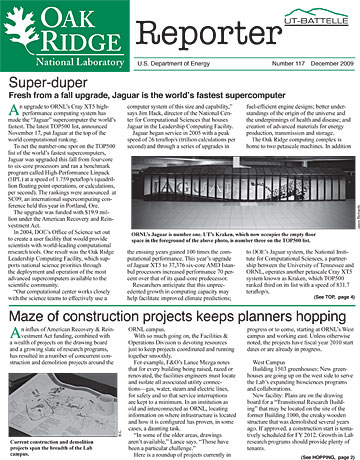

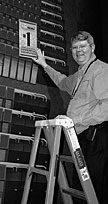
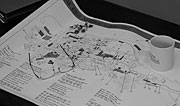
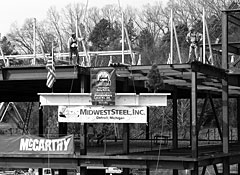
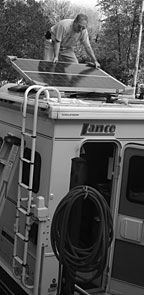
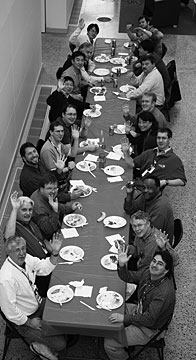


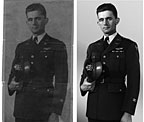
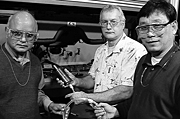
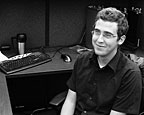
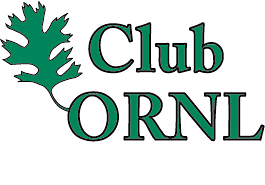 Get the details and latest news on Club ORNL Events online via the ORNL home page and on ORNL Today. This information can also be viewed outside of ORNL via the external Club ORNL SharePoint Site: https://info.ornl.gov/sites/clubornl. From this site, you can view upcoming Club ORNL Events, and ORNL retirees can request an XCAMS account. Having an XCAMS account will allow ORNL retirees to participate in these events. Lara James is the retiree point of contact, 576-3753 or jamesla@ornl.
Get the details and latest news on Club ORNL Events online via the ORNL home page and on ORNL Today. This information can also be viewed outside of ORNL via the external Club ORNL SharePoint Site: https://info.ornl.gov/sites/clubornl. From this site, you can view upcoming Club ORNL Events, and ORNL retirees can request an XCAMS account. Having an XCAMS account will allow ORNL retirees to participate in these events. Lara James is the retiree point of contact, 576-3753 or jamesla@ornl.